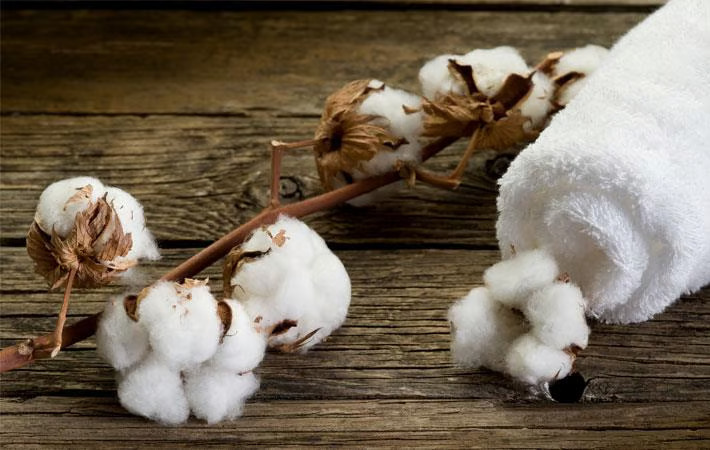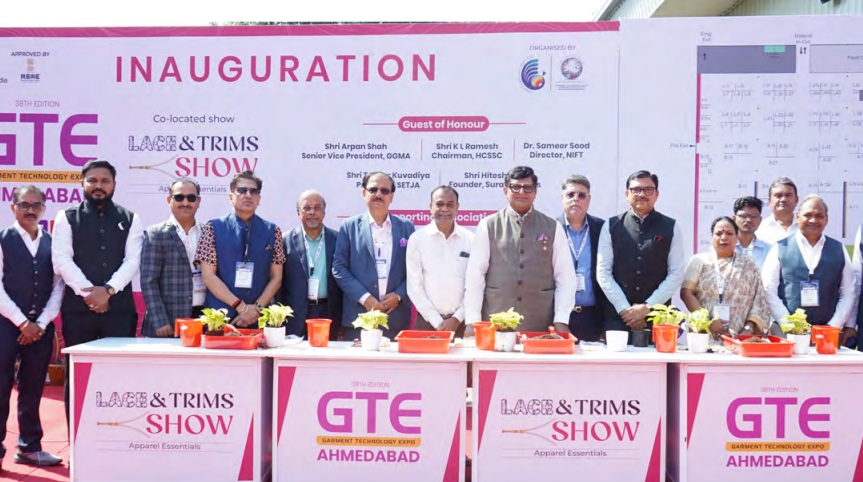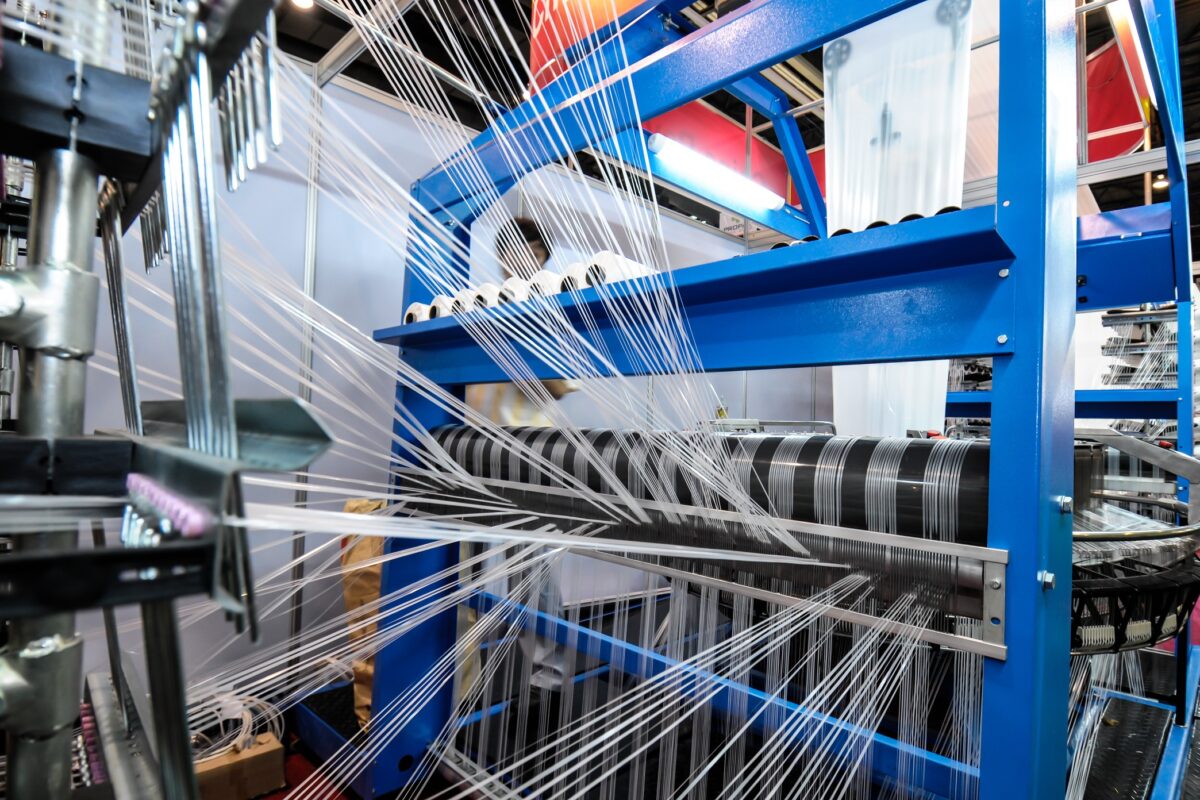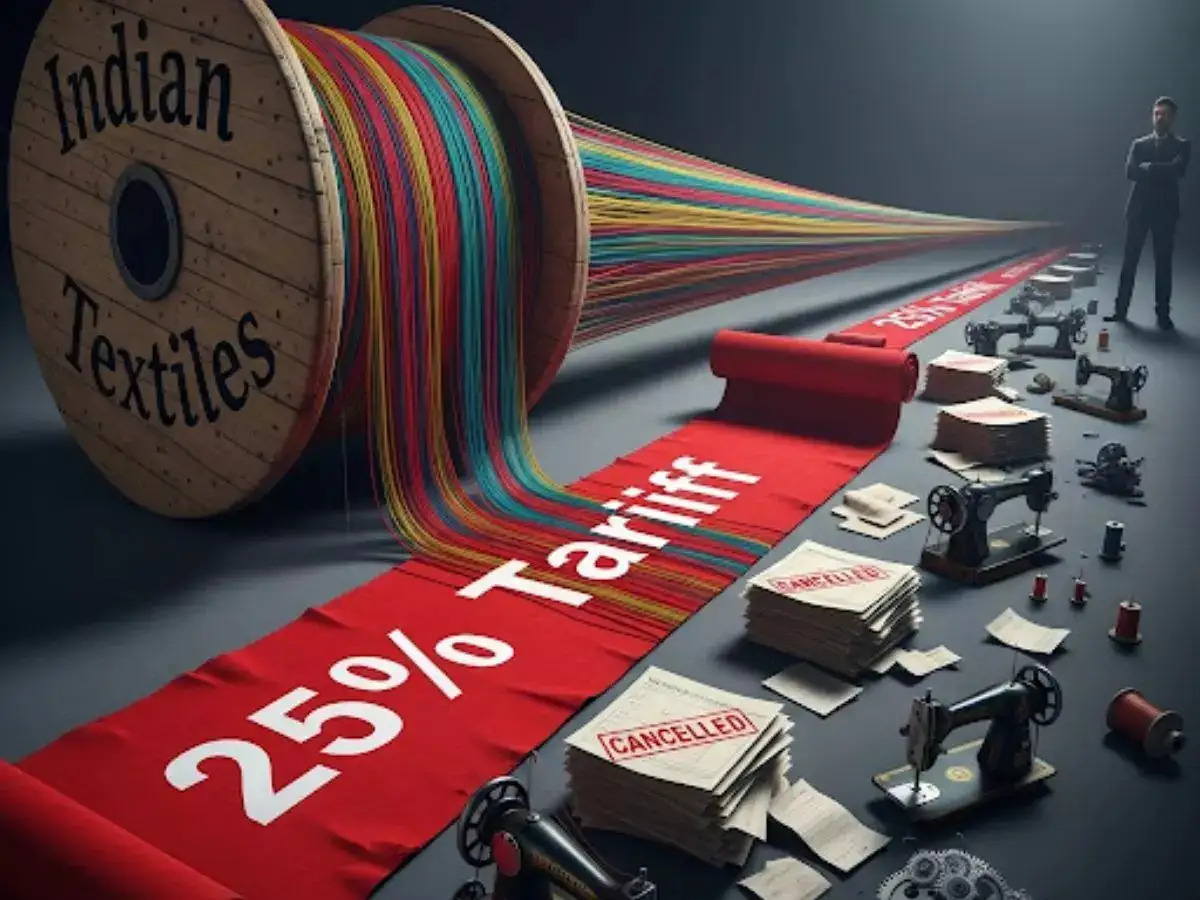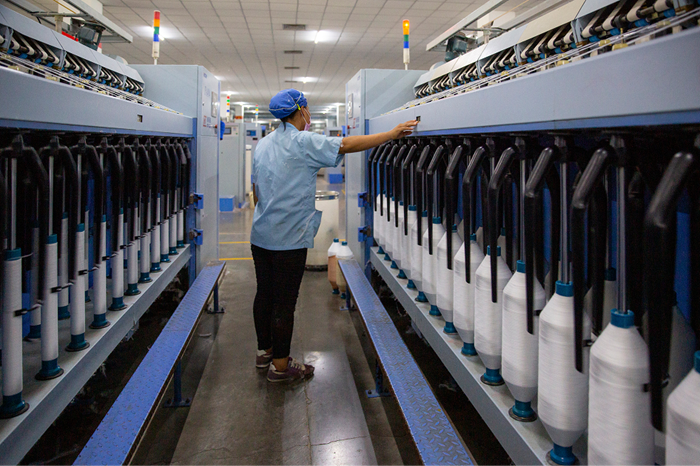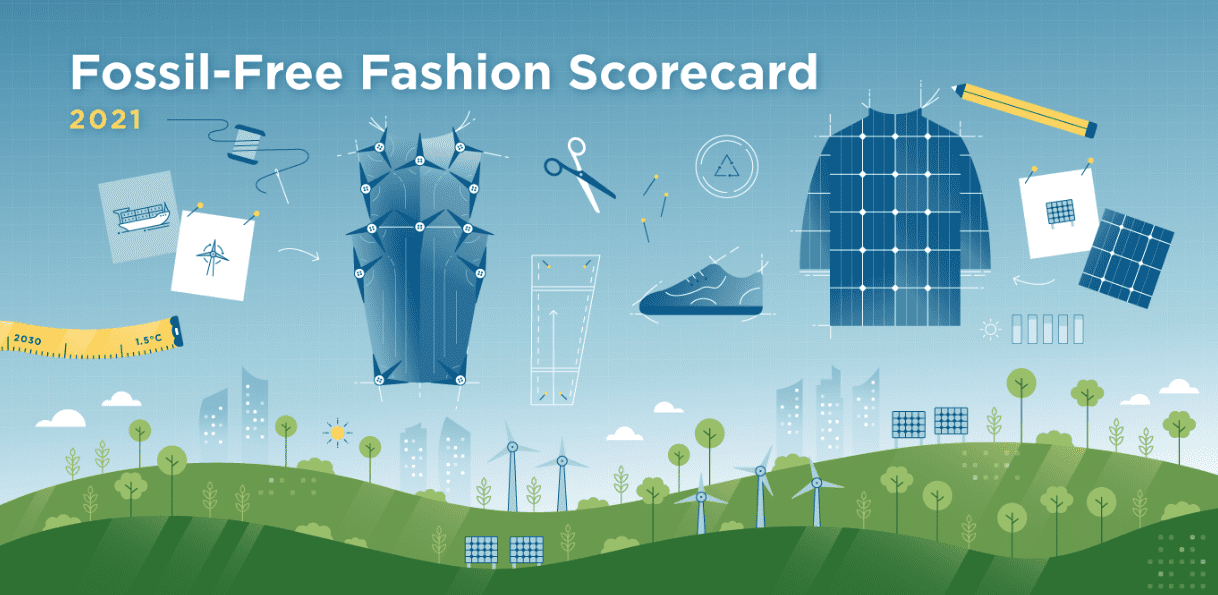FW

India’s huge textile industry, long celebrated for its command over cotton and competitive manufacturing scale, is going through a foundational redesign. At the heart of this shift lies an emerging consumer appetite for textiles that do more than drape and insulate. Fabrics are being engineered to sense, monitor, regulate, and communicate, transforming garments into data-driven wearables. What was once a downstream innovation challenge for brands and designers has now become a structural rewrite of the fibre-to-fabric ecosystem itself.
The stakes are rising sharply. The country’s smart clothing opportunity projected to touch nearly $1 billion by 2030 depends on a decisive shift from commodity-driven production to the sophisticated construction of e-textiles and technical fabrics. This means India’s most traditional mills must learn the language of electronics, automation, and materials science almost overnight.
The policy engine behind the transformation
India’s federal policy posture is now explicitly aligned with this upstream transformation. The industry is being repositioned not simply as labour-intensive manufacturing, but as a technology-led manufacturing base with integrated material science capabilities.
For example, the Ministry of Textiles reports that India currently produces 1,700 million kg of man-made fibres and 3,400 million kg of man-made filaments annually. Further, an analysis of the Indian market shows that India’s technical textiles industry was valued at $29 billion in 2024 and is forecast to reach $45 billion by 2026, $123 billion by 2035 and $309 billion by 2047.
In addition, India’s share of global textiles & apparel trade is about 3.91 per cent in 2023-24, while the sector’s exports accounted for 8.21 per cent of total Indian exports that year. Major government programmes such as the Production Linked Incentive (PLI) scheme for textiles and the National Technical Textiles Mission (NTTM) are directly supporting investment in man-made fibres, technical textiles and value addition. Reports say, the PLI scheme has catalysed investments of around Rs 7,343 crore (approx. $ 0.9 billion) in the textiles sector, generating turnover of Rs 4,648 crore and exports Rs538 crore in one cycle.
From a strategic viewpoint, this policy architecture signals a clear objective: reposition India’s upstream textile segment from low-end, labour-intensive bulk manufacture to a high-value, technology-enabled materials manufacturing hub.
Inside the smart textile mill
In spinning rooms and weaving halls across the country, a quiet digital revolution is already underway. The traditional textile workflow reliant on manual inspection and high wastage is being replaced with AI-driven defect tracking, predictive maintenance, and automated process control. Such upgrades were once optional for mills serving mass-market fashion, but they become business critical when the raw materials involved are conductive polymers or nano-ink coatings that cost many multiples of standard cotton.
Quantitative benchmarks reinforce the case: mills that introduce automated inspection systems and end-to-end digital workflows can reduce defects, increase uptime and mitigate waste critical when conductive inks or specialty fibres cost multiples of standard materials. Several industry studies suggest a profit boost of roughly 8 to 9 per cent can be achieved when defect levels drop through digital inspection.
Crucially, intelligence is now being embedded at the earliest stages of manufacturing. Rather than attaching sensors to garments at the final assembly stage, a method that compromises comfort and durability, Indian mills are experimenting with ways to weave electricity into fabric itself. Modified polymers are being extruded into conductive filaments; silver-nanoparticle inks are being printed on base fabrics with circuitry designed to stretch and bend with the human body. The tactile softness of a T-shirt must coexist with the performance reliability of a biometric device.
Integration, value capture and new business models
The business case for vertical integration has never been stronger. Vertically integrated textile parks such as those envisaged under the PM MITRA programme are emerging as the preferred model for embedding end-to-end capabilities: fibre production, yarn spinning, weaving, smart-fabric conversion, electronics embedding and finished apparel. This integration secures shorter lead times, higher margins and better IP protection.
One real-world example: a South India–based textile leader, servicing defence and high-performance wearables, developed a biometric-monitoring jacket. Critical to the success was the company’s ownership of the entire chain, from conductive ink development to sensor layout on fabric ensuring washability, signal stability and acceptable cost structure. Such projects illustrate that competitive advantage in the smart-apparel domain is not anchored in the garment alone, but in the upstream mastery of materials and integration.
For B2B players in the supply chain, fibre suppliers, chemical formulators, machine-builders, fabrics converters the opportunity is twofold. First, addressing high-growth segments like defence, medical wearables, industrial safety and sports performance gear; second, capturing margins previously reserved for brand-led garment segments. Technical textiles thus become a new frontier of value capture rather than commoditised apparel.
The roadblocks to India’s growth
Yet, the ascent of e-textiles is far from frictionless. Inputs such as carbon fibres, graphene composites, and nano-inks remain significantly more expensive than conventional fibres, narrowing the market to specialised sectors like defence, medical monitoring, and athletics. A workforce steeped in traditional textile know-how must suddenly acquire fluency in flexible electronics and digital manufacturing. Without this talent transformation, progress remains uneven, especially across MSME clusters that dominate the textile economy.
Durability continues to be the toughest scientific challenge. A smart garment cannot lose function after three laundry cycles or under strain during use but achieving that resilience requires testing protocols and performance standards that India has yet to institutionalise. Meanwhile, energy storage remains the final frontier. Wearables today rely heavily on rigid battery components; the vision of energy harvested directly from human motion is still trapped inside the research lab.
A fabric industry becoming a tech industry
Despite these barriers, the direction of travel is unmistakable. India’s textile sector is shifting from a business defined by price and productivity to one shaped by intellectual property, innovation ecosystems, and exportable technological value. What emerges from this transition is a fundamentally new identity: textiles that think, fabrics that interact, garments that generate data.
The companies that adapt fastest today will become the global suppliers of military wearables, medical monitoring apparel, sports-performance gear, and industrial safety solutions tomorrow. And as costs fall and capabilities mature, the intelligence embedded in protective gear will flow into everyday wardrobes.
India’s transformation from the world’s fabric mill to the world’s fabric-tech powerhouse has already begun and it is being spun, woven, and printed deep within its textile heartlands. The success of this metamorphosis will determine not just the future of Indian apparel manufacturing, but the nation’s ability to lead in a global industry where function is rapidly becoming fashion’s most prized feature.
Shedding the image of a fast-fashion label, Marta Ortega Pérez, Chairperson, Inditex, aims to elevate Zara’s image as a brand focusing on quality, and long-term sustainability.
Since taking over the leadership role in 2022, Perez has shifted the company's narrative from being solely about rapid trend replication to emphasizing ‘selling well’ rather than just ‘selling more.’ She is pursuing a strategy to align Zara's image more closely with high-end and designer fashion, distancing it from the budget-focused fast fashion image:
Under her leadership, Zara has increased its collaborations with major fashion industry figures, including renowned photographers like Steven Meisel and prestigious architects and designers like Vincent Van Duysen. These partnerships are used for campaigns and new store concepts, legitimizing Zara’s design discourse.
The brand has opened new flagship stores, such as the major Barcelona location to resemble museums or exclusive residential spaces. This transformation focuses on emotion, experience, and careful, intellectual design, aiming to seduce premium customers and appeal to a ‘residential sense,’ encouraging more frequent visits.
Ortega has explicitly stated that the new ambition is ‘not about selling more, but about selling well,’ suggesting a move toward higher quality, better design, and a potentially more deliberate pace than the traditional fast fashion model.
The strategy emphasizes bridging the gap between high street and high fashion, offering accessible yet high-quality clothes.
Inditex has set ambitious corporate sustainability goals, which directly challenge the high-volume, disposable nature of fast fashion. The company aims to achieve net zero emissions by 2040. It has set goals to significantly increase its use of recycled and ‘net-generation’ fibers. This includes targets for having a high percentage of fibers sourced from recycling processes or regenerative agriculture by 2030.
Zara is expanding circularity programs like Zara Pre-Owned, which encourages the resale, repair, or donation of used garments, thereby extending the life cycle of its products.
There is a continued focus on commitments regarding supply chain management, human rights, and the reduction of hazardous chemicals.
Additionally, Inditex is investing heavily in logistics and technology to support its new values. The company is implementing an extraordinary investment plan for logistics, including new distribution centers, to enhance efficiency and responsibility across its operations.
In essence, Ortega’s strategy is a multi-pronged effort to reposition Zara as a premium, design-forward, and responsible fashion retailer capable of competing with luxury segments, while still leveraging the efficiency of its supply chain. This shift is crucial for maintaining relevance in a market increasingly critical of traditional fast fashion's environmental and social impact.
This year’s edition of Texworld Apparel Sourcing Paris will once again be held at the Paris-Le Bourget Exhibition Centre from February 2–4, 2026.
The trade show will again serve as one of Europe's most vital sourcing platforms, bringing together approximately 1,300 suppliers from nearly 30 countries. Organized by Messe Frankfurt France, the event holds particular significance for brands and sourcing managers preparing their Spring–Summer 2027 collections. It will emphasize sustainability, material transparency, and traceability as central themes, utilizing the Texpertise Econogy tools - including the Econogy Finder, Talks, and Tour - to help buyers identify compliant and responsible partners.
This year, to enhance sourcing efficiency, Messe Frankfurt has strategically redesigned the hall layout: Texworld Knit and the All about her segment will move to Hall 3, while Activewear, Casual and Sport, Print, and Jacquard will be grouped together in Hall 4 to strengthen the continuity between materials and finished goods. Hall 2 will remain the main hub for networking and trend sessions.
The 2026 show will also feature the return of two signature concepts: Initiatives, which spotlights artisanal crafts and industry research, and Ready to Sell, a curated selection of commercially viable products aligned with the SS27 creative direction. Industry observers expect this redesigned model to facilitate the faster evaluation of sustainability commitments and supply-chain credibility, which are increasingly dominant factors in purchasing decisions for international buyers.
Fueled by a rising focus on health, wellness, and advanced textile technology, the global functional apparel market is experiencing significant expansion. According to a report by Allied Market Research, valued at $282.30 billion in 2018, the market is projected to reach $505.80 billion by 2026, growing at a Compound Annual Growth Rate (CAGR) of 7.7 per cent from 2019 to 2026. Europe was the largest regional market in 2018, commanding a 30.2 per cent share.
A key category within technical textiles, functional apparel is highly receptive to new product development and technological breakthroughs in fiber and fabric materials. The rapid emergence of these garments is directly connected to evolving consumer behavior.
The rise of the millennial generation is a primary influential trend. Millennials prioritize a holistic approach to health and fitness, making active lifestyles an integral part of their daily routine. Functional apparel manufacturers have successfully built an emotional connection with this demographic, who actively seek clothing that promotes fitness and activity.
Furthermore, the extensive advantages of activewear—including water resistance, bi-stretchable function, anti-bacterial fabric, and wicking capabilities—are attracting a growing number of participants in physical activities. The female consumer base for activewear is also expanding rapidly due to a holistic approach to sports and fitness. The increasing adoption of athleisure wear for everyday use, combined with rising disposable incomes and heightened fitness concerns, further propels the market.
Despite strong growth drivers, the market faces challenges. The volatile cost of raw materials and inflated design costs contribute to a high price point for the final product, which can hinder sales among price-sensitive customers. Additionally, the proliferation of counterfeit brands poses safety and inconvenience issues for consumers.
The market is segmented by product (sportswear, active wear, protective clothing), application (sports industry, outdoor clothing, healthcare), and distribution channel (offline and online). Geographically, strong growth is anticipated across North America, Europe, Asia-Pacific (including China and India), and LAMEA.
Already a major economic engine, India’s textile and apparel (T&A) market is poised for significant expansion over the next decade. A new report from IMARC Group notes, valued at $222.08 billion in 2024, the market is projected to grow to $646.96 billion by 2033, reflecting a strong CAGR of 11.98 per cent from 2025-33.
India's textile sector is currently at a critical transformation point, blending its deep heritage in cotton, silk, and artisanal craftsmanship with cutting-edge modern textile mills and brand-driven fashion ecosystems
Growth is being fueled by a confluence of strong market drivers including rising disposable incomes, increasingly brand-conscious consumers, and the expansion of both domestic and international retail channels are boosting demand for ready-to-wear, athleisure, and premium garments. There is also a notable shift toward high-end fashion and smart textiles.
Environmental awareness is driving market changes, with demand for ethical and environmentally sustainable materials, recycled fibers, plant-based fabrics, and circular textile models growing across the entire fashion value chain.
Key initiatives, including the PM MITRA textile parks, Production Linked Incentive (PLI) schemes for man-made fibers, and digital support for weaver clusters, are accelerating modernization efforts and improving the country's export competitiveness.
Investments in technological improvements across spinning, finishing, dyeing, and digital printing are enhancing both product quality and overall production efficiency.
While India’s traditional strengths, such as skilled labor and abundant natural fiber availability, remain essential, the IMARC report highlights, future success lies in design innovation, establishing leadership in sustainability, and adopting vertically integrated manufacturing models. For brands to capture higher-margin opportunities, they must invest heavily in supply chain transparency, digital retailing, and compliance with strict export-market standards. Meanwhile, supporting artisan communities and MSMEs will be vital to preserving India's unique craft identity in the global market.
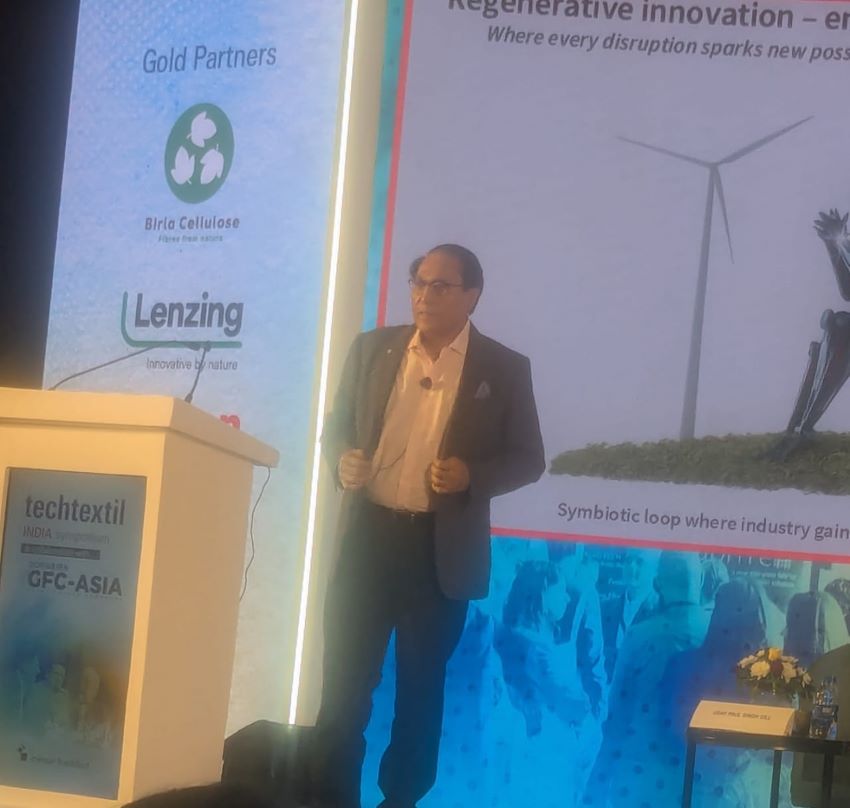
The global textile industry is at a crossroads where mere efficiency and profit no longer guarantee survival. This was the central message delivered by Uday Paul Singh Gill, Senior Partner at Gherzi Consulting, Zurich, during his keynote address at the Dornbirn Global Fibre Congress (GFC). He argued that long-term success requires a fundamental shift in mindset, prioritizing regenerative innovation that balances profit with purpose.
The Innovation Paradox: Unintended consequences
Gill challenged the traditional view of innovation, pointing out that some of the greatest scientific achievements have led to profound environmental damage. "I have worked in polyester all my life. But yet, polyester is said to be the miracle of science. And we didn’t know that the solution to the fibre industry by polyester can end up in creating microplastics."
He used the invention of the combustion engine and the widespread use of polyester, which fragments into microplastics, as classic examples of how innovation, when unchecked by purpose, leads to "highly unpredictable, unintended consequences." He concluded that the new mandate is to put "purpose and discipline on innovation" to ensure it benefits humanity and the planet.
The call for ‘Regenerative’ innovation
The key to long-term survival, according to Gill, is regenerative innovation—a system that moves beyond just being "less bad" to being actively good for the environment and the community.
This concept demands the creation of symbiotic groups where:
● Industry prospers.
● Nature benefits.
● The community is prosperous.
Gill stressed that simply scaling up ideas or achieving cost efficiencies is no longer enough. Instead, innovation must create lasting value, not just profit, by leveraging the convergence of three major domains: physical, digital, and biological.
Surviving the shortening corporate lifespan
The speaker warned that as the pace of disruption accelerates, the average lifespan of corporations is shrinking. Companies that fail to continuously renew themselves will become obsolete, much like Blackberry or the Indian TV company Onida, which failed to adapt to digital technology.
Gill linked this instability directly to inefficient resource deployment and overcapacity, stating that innovation is required when "scale out grows demand." The solution lies in creating a strategic architecture for resilience and "first time right execution."
The brain economy and human centricity
Perhaps the most thought-provoking argument centered on the "Brain Economy," which focuses on capturing and leveraging human cognitive surplus. Gill criticized modern workplaces for pushing humans to work like machines while simultaneously trying to make machines think like humans."We are pushing the humans beyond their limits and stretching them to work like machines. Whereas at the same time we are trying to make the machines think and work like humans. So this is why I think we are going wrong on both sides."
For regenerative innovation to succeed, the human element—creativity, well-being, and mental state,must be superior and agile, working on top of the machines, not beneath them.
Finding the "Sweet Spot" for sustainable profit
Gill’s strategic recommendation for manufacturers looking for long-term survival was to integrate their value chain to find the "sweet spot" between scale and value.
● Commodity Model: High scale, low profitability, high volatility.
● Speciality Model: High overheads, inconsistent profitability.
● The Sweet Spot: Integrating the chain to combine the best aspects of scale and specialty, resulting in improved earnings quality and long-term viability.
He concluded with an urgent call to action, emphasizing that the time for incremental change is over. Successful innovators are those who execute their ideas sustainably and fast, making it clear that, going forward, the industry must prioritize the planet first, the people first, and then the profit.

The global textile industry is entering a period of exponential growth and profound technological transformation, according to key figures speaking at the Dornbirn Global Fibre Congress (GFC) in Mumbai. While demand for fiber is set to soar, the industry's fossil-fuel foundation is shifting, placing pressure on machinery manufacturers and innovators to rapidly pivot toward circular and bio-based systems.
Insights from Georg Stausberg, CEO of Oerlikon Polymer Processing Solutions, and Professor Thomas Gries, Director of the Institute of Textile Technology at RWTH Aachen University, painted a picture of opportunity, provided the necessary technological investments are made now, particularly in India.
The Growth Mandate: 168 mn tons of demand
Despite economic volatility and geopolitical pressures, the long-term outlook for fiber demand remains overwhelmingly positive.
Stausberg highlighted that population growth and increasing global wealth are driving continuous expansion. "We expect that in 50 years from now, there will be 1 billion more people on our planet," Stausberg noted. This demographic surge is projected to push the total demand for fiber—man-made and natural—from the current level of approximately 118 million tonnes to a massive 168 million tonnes in the coming decades.
To meet this scale, the manufacturing base is consolidating in Asia, with India poised to capitalize significantly on the growth, particularly in specialized areas.
The Technical Textile boom in India
The demand surge is not just for apparel; it is heavily focused on specialized, high-performance fibers—known as technical textiles. These products are critical for modernizing infrastructure and manufacturing sectors, areas where India is experiencing rapid growth.
Speakers forecast the technical textiles segment in India to nearly triple by 2040. The key growth sectors include:
● Geotextiles: Used for road and railway construction.
● Building & Construction: Demand for concrete reinforcement and insulation materials.
● Automotive: High-performance yarns for seatbelts, airbags, and tyre cord, essential for the growing domestic and export car industry.
The polyester paradox and the shift to bio-economy
The dominant fiber, polyester, currently accounts for 85% of global man-made fiber production. However, this dominance presents the core challenge for sustainability efforts.
Professor Thomas Gries emphasized that the current reliance on petrochemicals is unsustainable, necessitating a shift into a "non-fossil base" future, or the Bi-economy Transition. He outlined three critical strategies for this pivot:
- Bio-based materials: Utilizing biomass, natural fibers, and bio-based building blocks.
- CO2-to-Polymer: Developing technology that captures carbon dioxide and makes polymers directly out of it.
- Recycling: Aggressively scaling up systems for textile waste.
Professor Gries reminded the delegates that sustainability must encompass more than just a carbon footprint—it requires coping with society, education, and well-being—a holistic approach to transition the entire ecosystem.
Chemical recycling: The missing link
While mechanical recycling is the current industry standard, it is limited in its ability to process complex materials like blended, colored, and contaminated fibers, which constitute the majority of post-consumer textile waste.
Stausberg underscored the urgency for a breakthrough in chemical recycling. Oerlikon, a world leader in equipment manufacturing, is actively working with partners on intensive research to bridge this gap. "Recycling at the moment, state-of-the-art is mechanical recycling, where we already have solutions available," Stausberg explained. "Chemical recycling is also very important... and hopefully we can offer solutions here in the next 2–3 years, also for textile-to-textile recycling."
The machinery suppliers, represented by Oerlikon Barmag, recognize their critical role in the circular economy by providing end-to-end solutions, often referred to as "from melt to yarn." These solutions are necessary to process feedstocks ranging from traditional fossil-based polymers to new bio-based materials and the monomers recovered from chemically recycled textiles.
The consensus from the conference floor was clear: the technology exists to handle future demand, but achieving true, industrial-scale circularity—the kind that can transform textile waste back into high-quality fiber—requires massive, coordinated investment in chemical processing technology to move past the limitations of mechanical sorting and shredding.

The journey for India’s activewear industry to move "Beyond CMT" (Cut, Make, Trim) and capture the global premium mandate is not constrained by market demand or labor, but by structural bottlenecks in the supply chain, investment philosophy, and training. Panel discussions at the Techtextil India SportTech Pavilion underscored that overcoming these challenges requires a fundamental shift in strategy: from isolated operation to radical collaboration.
The Bottleneck: A disjointed ecosystem
Industry leaders repeatedly pointed to the lack of a fully integrated domestic ecosystem as the primary roadblock to achieving global scale and competitiveness, especially when facing giants like China and Vietnam.
● Reliance on imports: The central weakness lies in the backward supply chain for high-quality synthetics. The problem of sourcing good polyester is considered "solved," but the industry still relies on imports for specialized raw materials, such most importantly, high-quality nylon yarn and specific components for technical garments.
● Missing infrastructure: This dependence on imports creates unacceptable delays. Bhaskar Dutta, Sourcing Head, Page Industries/Jockey India shared a practical example: a designer requested a specific yarn color, and the manufacturer had to wait two months to procure the yarn from China, resulting in a lost season. Dutta argued that similar yarn could be sourced in China within seven days, demonstrating the competitive infrastructure gap India must bridge.
The Strategic Fix: Integration and consortiums
The consensus solution is to rapidly build strong domestic verticality and implement highly collaborative models to ensure speed and consistency.
● Vertical integration as default: Major garment exporters are becoming vertically integrated, controlling the process from yarn to finished product. This approach allows companies like Gokuldas Exports, which recently invested $105 million this year and is targeting $1 billion in revenue by 2030, to reduce complexity and lower the overall cost of production.
● The power of consortiums: For smaller players and specialized needs, the solution is deep collaboration across the value chain. A consortium of yarn makers, fabric processors, trim suppliers, and garment makers working together was cited as a success model. This collaboration is crucial for sampling and small orders—key activities required to win and retain international buyers who test products before placing massive orders.
The Investment Hurdle: Shifting the mindset on ROI
Beyond the physical supply chain, a major cultural and financial bottleneck was identified: the industry’s philosophy on investment and R&D.
● The quick ROI problem: Many Indian manufacturers operate with a mindset of wanting a quick Return on Investment (ROI) on new technology. As Abhay Dev noted, this desire immediately drives up the price of new, innovative products, which ultimately prevents them from achieving the commercial scale needed to lower costs, thus perpetuating the cycle of non-competitiveness.
● The Sustained investment mandate: Anandan (Gokul Exports) countered that technology is needed for "sustainment," not just quick return. He noted that their internal efficiency rose from 31% to 48% through organizational investment, proving that internal optimization—not external price increases—should fund innovation.
● R&D as an "Innovation Facility": Leaders called for manufacturers to treat the "manufacturing facility as an innovation facility" and invest in R&D without the immediate expectation of financial return. Shaleen Toshniwal, Chairman, MATEXIL advocated for pursuing "fundamental research," urging the industry to avoid merely copying global technology ("making a better steam engine") and instead focus on breakthroughs ("the internal combustion engine") that fundamentally change the game.
Cost efficiency and training in new clusters
To compete effectively on cost with other Asian nations, the industry is strategically migrating production, which creates an urgent need for upskilling.
● Regional migration for cost advantage: To address rising costs in traditional textile hubs, large players are shifting manufacturing to lower-cost locations like Bhopal, Ranchi, and Orissa. This move is aimed at balancing the price-conscious nature of the market while maintaining quality standards.
● Strengthening the middle layer: This geographical shift creates a simultaneous training challenge. While the general workforce can be trained quickly, there is a critical shortage of middle management, the strategic decision-takers. The solution requires collaboration with local governments to establish technical training institutes in these new clusters to rapidly enhance the skill levels of the core team responsible for quality and efficiency.
The panels concluded that for India to achieve its target of doubling exports to $10 billion by 2030, the textile fraternity must replace its historical reliance on isolated manufacturing with a nationwide policy of technical collaboration and long-term strategic investment.
The panel discussions at the SportTech Pavilion during Techtextil India (November 19-21, 2025, in Mumbai). The sessions were titled "The Premium Mandate" and "Beyond CMT" and were moderated by Concepts N Strategies.

The SportTech Pavilion at Techtextil India, hosted by Concepts N Strategies, concluded with a unanimous declaration: for India to successfully execute its "Premium Mandate" and move "Beyond CMT," technical textile innovation and radical sustainability are non-negotiable. The future of Indian activewear relies on turning the factory floor into a science lab that prioritizes green operations and next-generation materials.
Sustainability as a "Given Thing"
For the new generation of brands, the idea of offering sustainable products is no longer a unique selling proposition; it is the entry ticket to the premium market.
● Mindset Shift: Praveen Dhake, founder of the high-performance brand Athlos Activewear, emphasized this critical shift in perception: "Sustainability, I think, at least going ahead for most of the brands, should be a very big component. It should be not just a market." He stressed that his brand doesn't sell a running short because "it’s sustainable," but because it's a "damn good running short" that happens to align with eco-conscious principles.
● Ethical Storyline: The demand for performance must be matched by a transparent, ethical "storyline" that explains how genuinely the product is made, satisfying a global consumer base increasingly aware of the environmental footprint of apparel.
Clean Manufacturing: The green infrastructure mandate
To meet global compliance standards and secure buyer trust, Indian mills are heavily investing in state-of-the-art green infrastructure, moving away from polluting legacy processes.
● Zero impact facilities: Puneet Singla, General Manager Kusumgar Limited detailed his company's commitment, noting that "compliance is also one thing that we live with." This is demonstrated through tangible, massive investments: running a "zero-coil boiler," maintaining a "zero liquid discharge facility," and generating up to "65 to 70 percent of electricity coming from the solar rooftop" panels.
● Eliminating water use: The industry is even tackling one of the most water-intensive processes in textiles. Panelists noted the introduction of technologies like "waterless dyeing," which not only conserves resources but also allows for smaller production runs (e.g., dyeing to the level of 15-20 pieces of fabric), essential for the faster cycles required by international buyers.
The Material Science Frontier: From recycled to bio-tech
The most intense focus is on the raw materials themselves, pushing manufacturers to master synthetic and natural performance fibers.
● Innovation in eco-materials: Brands are expanding beyond conventional cotton, leveraging advanced fibers for high-performance gear. Athlos Activewear exclusively works with fibers like merino wool, recycled nylon, recycled polyester, bamboo, and Tencel. There is also future exploration into bio-tech to pursue non-recycling-focused sustainability.
● Technical fabric breakthroughs: Indian mills are demonstrating advanced capability, achieving production that rivals international leaders. Puneet Singla highlighted the successful manufacturing of fabrics "as fine as 15 denier," resulting in weights as low as 35 gsm—a level of finesse previously difficult to source domestically.
● The Nylon challenge: Despite progress, a critical supply chain gap remains: high-quality nylon yarn. The industry confirmed that the problem of sourcing good polyester is "solved," but brands still need to look overseas for premium nylon. This need has triggered a new mandate for local manufacturers to collaborate and invest in MMF (Man-Made Fiber) processing and spinning plants to close this gap and ensure reliable, consistent domestic sourcing.
The convergence of radical technical innovation and rigorous environmental compliance is rapidly becoming the defining characteristic of India’s competitive edge, ensuring that the country is ready to deliver not just products, but solutions built on a clean and capable foundation.
These panel discussions were held at the SportTech Pavilion during Techtextil India (November 19-21, 2025, in Mumbai). The sessions were titled "The Premium Mandate" and "Beyond CMT" and were moderated by Concepts N Strategies.

Europe’s fashion and textile scenario is on the verge of its most consequential structural shift in over a decade. The European Union’s plan to abolish the €150 de minimis customs exemption for non-EU e-commerce imports, now fast-tracked for implementation by early 2026 is ready to reset competitive dynamics across the region. For years, this loophole allowed billions of small parcels to enter the bloc duty-free, enabling platforms like Shein and Temu to weaponize ultra-low pricing and scale to capture massive market share.
That asymmetric advantage is now being systematically dismantled. Once the exemption disappears, every cross-border parcel entering the EU will attract customs duties, VAT, and potentially additional handling charges. The impact will be immediate and deeply disruptive, particularly for Chinese fast-fashion exporters whose model depends on high-volume, low-value shipments.
Meanwhile European retail giants such as Inditex (Zara) and H&M, historically disadvantaged by this uneven tax regime are emerging as the biggest beneficiaries. With compliance discipline, proximity production, and established import infrastructure already embedded in their cost structures, the reform acts as a strategic tailwind precisely at a time when they face intense competition from Asian e-commerce titans.
The scale of the loophole
The volume of duty-free parcels entering the EU has rose to levels that few policymakers anticipated. More than 4.6 billion small parcels entered the bloc under the de minimis threshold last year, and over 90 per cent originated from China. These shipments bypassed standard import duty of roughly 12 per cent on apparel, allowing overseas platforms to undercut European price tags by margins traditional retailers could never match. To contextualize the scale of the distortion, the following table shows how the duty-exempt ecosystem ballooned relative to the EU’s apparel import market.
Table: Duty-free e-com parcels vs. overall EU apparel imports (2024)
|
Metric |
Estimate |
|
Total low-value parcels imported into EU |
4.6 billion parcels |
|
Share originating from China |
90%+ |
|
Estimated value of de minimis imports |
€35-40 billion |
|
Standard apparel duty for EU retailers |
12% |
|
Parcels entering with zero duty |
Nearly 100% of de minimis consignments |
The abolition of the exemption not only reintroduces duties but also introduces a proposed €2-per-parcel handling charge an added burden that hits low-ticket, high-volume models the hardest. For an item retailing at €8-10, even minor additional costs can collapse its price competitiveness.
Compliance becomes a competitive filter
Beyond the duty dimension, the EU is simultaneously rolling out its stricter Import Control System 2 (ICS2), requiring all incoming packages to be backed by comprehensive pre-arrival data. This includes accurate six-digit HS codes, detailed product descriptions, and complete declarations standards that many cross-border sellers have historically failed to meet.
Where European retailers already comply with REACH chemical norms, stringent product-safety frameworks, and routine customs processes, low-cost e-commerce exporters face a major structural adjustment. Delays, detentions, and administrative penalties under ICS2 could severely disrupt the speed-dependent, volume-driven model of platforms such as Shein and Temu. To illustrate the operational gap between regulated European import systems and fragmented Chinese parcel-shipping networks, consider the following:
Table: Compliance complexity EU retailers vs cross-border e-commerce platforms
|
Parameter |
Inditex/H&M model (traditional retail) |
Shein/Temu cross-border model (D2C) |
|
Duty & VAT Exposure |
Fully compliant for all bulk imports (pays duty & VAT) |
Minimal to zero under de minimis rule—now ending |
|
Product Safety & REACH Compliance |
Integrated, certified supply base |
Historically inconsistent; audits limited |
|
ICS2 Data Requirements |
Existing infrastructure and integrated ERP systems |
High risk of misdeclaration or incomplete data |
|
Supply Chain Structure |
Near-shoring, consolidated shipments |
Millions of micro-parcels via air courier |
|
Vulnerability to Customs Delays |
Low (due to compliant bulk shipments) |
High under new rules (due to high volume of small parcels) |
The friction introduced by ICS2 is likely to be as impactful as the new customs charges themselves. A packet with incomplete HS codes may face multi-day holds, eroding the instant-gratification proposition that fuels fast-fashion e-commerce.
Why Europe’s traditional retailers stand to gain
The regulatory reset effectively rewrites the competitive calculus in Europe’s online apparel market, where Chinese platforms are estimated to have seized over 20 per cent of digital fashion sales in recent years. With the price gap narrowing and compliance burdens rising, Zara and H&M find themselves positioned to recover lost ground.
One of the most decisive advantages lies in operational agility. Inditex’s signature proximity sourcing model with nearly half its production located in Spain, Portugal, Morocco, and Turkey means shorter lead times, faster replenishment, and lower inventory risk. When cross-border shipments slow or become cost-prohibitive, agility becomes market share.
The rising cost of importing low-value shipments also reshapes consumer behaviour. For millions of price-sensitive customers who flocked to Shein or Temu for €5 tops or €10 dresses, the narrowing price gap may make it more rational to purchase domestically or from established European brands. Even a 10-15 per cent increase in final retail prices for Chinese imports could significantly temper demand.
This dynamic increases revenue potential for European brands, especially in the mid-value fast-fashion segment. With Chinese imports becoming less disruptive, European players can regain footing in categories where they previously struggled to compete purely on price.
Rebalance, not a temporary correction
The EU’s overhaul is more than a regulatory response; it marks the beginning of a long-term redrawing of Europe’s retail competitive boundaries. European retailers have endured years of systemic disadvantage fully taxed, highly regulated, sustainability-compliant while competitor models routed around these obligations through fragmented cross-border parcel flows.
The elimination of the €150 exemption dissolves the foundational economic pillar supporting ultra-cheap fashion imports. Combined with the heavier compliance architecture of ICS2, the new regime takes aim not at volume but at the systems and incentives that enabled vast underpriced inflows.
For European incumbents, the shift gives an opportunity to reclaim pricing power and re-energize online growth. For global fast-fashion disruptors, it introduces cost, scrutiny, and uncertainty into a model that depended on frictionless access. As the EU advances toward a post-de minimis future, the balance of power in the region’s fashion market is tilting decisively. Inditex and H&M companies already structured to absorb regulatory, compliance, and duty costs stand to benefit significantly from the new environment. The customs overhaul is expected to lift operating margins, reduce competitive pressure from Chinese exporters, and catalyse a meaningful shift in consumer buying behaviour back toward established retail brands.
The outcome is clear: Europe is engineering a more level playing field, but in doing so, it is also fortifying the competitive position of its homegrown fashion giants. For fast-fashion e-commerce platforms built on micro-parcel economics, the era of effortless expansion in Europe is coming to an abrupt end.


